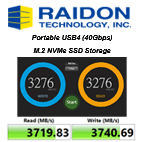How HCI Can Expand to Embrace Containers?
Approaches of VMware, Nutanix, Dell EMC, IBM, Suse, Scale Computing and StorMagic
This is a Press Release edited by StorageNewsletter.com on August 4, 2022 at 2:03 pm This report was written by Dave Raffo, senior analyst, Evaluator Group, Inc.
This report was written by Dave Raffo, senior analyst, Evaluator Group, Inc.
The move of modern application development towards containers will have an inevitable impact on hyperconverged infrastructure (HCI). How much of an impact will be determined by how the HCI vendors react to this change. The HCI concept of combining storage, compute and virtualization works well with containers, but traditional HCI is virtual machine-centric and containers will diminish the popularity of VMs. Like other storage vendors, HCI players will have to go beyond merely supporting containers through container storage interface (CSI) drivers.
HCI vendors are reacting in several ways. The big 3 of the current HCI market – VMware, Nutanix and Dell – have different strategies. There are newcomers to HCI – such as IBM and SUSE – who focus on containers and Kubernetes rather than VMs and hypervisors. And smaller players have tailored HCI for edge deployments while adding container support.
Let’s look at some of the vendor approaches:
VMware
Until the Broadcom acquisition, the company had a clear strategy on containers and Kubernetes. That was Tanzu, VMware’s container management brand that includes customer-managed software and VMware-managed services.
But VMware’s overall direction is uncertain following Broadcom’s $61 billion buyout. Broadcom’s acquisition playbook is to concentrate on big-selling products and technologies, and cut development for other parts of the companies it buys. There is no question vSphere, which vSAN HCI software is a part of, is the low-hanging fruit for Broadcom.
Tanzu is a small piece of VMware’s revenue, and there is plenty of life left in vSphere and vSAN. It would be no surprise if Broadcom slashed the Tanzu development budget to go full-speed ahead on VMware’s vSphere+ and vSAN+ on-premises subscription services.
VMware will have more to say about its long-term strategy at its Explore conference in late August, but even more will be clear after the Broadcom deal closes – probably in 2023.
Nutanix
This firm and Red Hat have partnered in a natural fit because they both compete with VMware. Red Hat’s OpenShift is now the preferred choice for full-stack Kubernetes on the Nutanix Cloud Platform, while Nutanix’s platform is now the preferred choice for HCI for REHL and OpenShift. Both companies talk of technical interoperability down the road.
With the Red Hat partnership, Nutanix is less focused as its internally developed Karbon Kubernetes distribution. Nutanix now describes Karbon as a quick way to run “vanilla” Kubernetes while OpenShift is a more robust, mature Kubernetes distribution with built-in developer-facing services. This relationship bears watching to see how quickly it develops.
Dell EMC
Its VxRail HCI system packages VMware technology on Dell PowerEdge servers. When Dell owned VMware, it was the preferred vSAN partner. That may change now that VMware is independent of Dell. At least one vendor – Lenovo – is making a concentrated effort to get VMware customers to switch to its vSAN-based ThinkAgile VX HCI platform.
Dell still relies on VMware for VxRail Kubernetes support through the VMware Tanzu Architecture for Dell EMC VxRail. However, Dell has another HCI product – PowerFlex – for customers who use hypervisors besides VMware. To bring container support to PowerFlex, Dell uses its internally developed Container Storage Modules (CSM) that extend Kubernetes support beyond CSI.
IBM Spectrum Fusion HCI
Spectrum Fusion HCI is different from traditional HCI because it was developed with a focus on containerized workloads vs. VMs. Spectrum Fusion is a container-native file storage platform designed for Kubernetes applications running on Red Hat OpenShift Container Platform (OCP). It includes containerized versions of Spectrum Scale file storage and Spectrum Protect Plus data protection software. The SDS version is a bare metal deployment of Red Hat OCP that runs on VMware.
IBM followed the 2021 launch of its turnkey appliance-based Spectrum Fusion HCI with a SDS version that lets customers pick their hardware.
SUSE Harvester
SUSE moved into HCI with Harvester, an open-source alternative to traditional HCI. It’s built on top of the SUSE Rancher container management platform, using the Cloud Native Computing Foundation’s KubeVirt sandbox project. Harvester installs on bare metal servers running the OpenSUSE-based OS and SUSE’s Rancher Kubernetes Engine 2.
SUSE’s goal for Harvester is to provide central management for Kubernetes and VM workloads. It’s target is Kubernetes users rather than the traditional HCI market served by VMware and Nutanix.
Scale Computing
It closed a $55 million funding round in July, and identified the edge as an area of expansion. Scale is VM-based but does not use VMware as most of the other early HCI vendors do.
Scale’s SC//Platform deploys ML for remote edge management at hundreds or even thousands of sites without IT staff. Scale enables management of containers on its HCI devices through k3OS, a lightweight Linux distribution managed by Kubernetes.
StorMagic
Its SvSAN is another HCI product targeted more at edge devices than data centers. StorMagic also sells Hivecell Edge-as-a-Service through a partnership with Hivecell. The Edge HCI service includes Hivecell HCI appliances running SvSAN software with synchronous mirroring between nodes for high availability. The monthly subscription includes hardware, OSs, licenses, provisioning, monitoring, management, upgrades, and service. StorMagic supports containers through the SvSAN Container Storage Interface (CSI) driver.














 Subscribe to our free daily newsletter
Subscribe to our free daily newsletter


